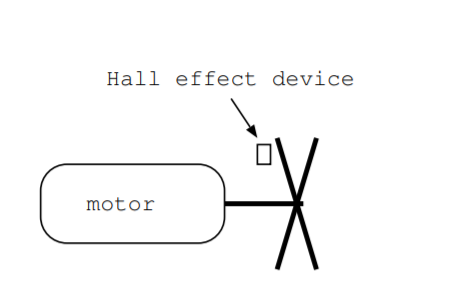5.4: Applications of Hall Effect Devices
- Page ID
- 18968
A Hall effect device is a simple device. It is essentially a piece of semiconductor with leads connected and calibrated for use. For this reason, Hall effect devices are inexpensive, small, and readily available. As with most integrated circuits, these devices are durable and long lasting because they have no mechanical moving parts [57].
Hall effect devices are available in two types: analog and digital. Analog Hall effect devices are typically integrated with an amplifier and circuitry to make the output more linear [57]. Some devices also contain circuitry to make the devices stable over a wider temperature range because the output of Hall effect sensors may be slightly temperature dependent [57]. The operating output voltage range of these devices is often limited by the amplifier circuit as opposed to the Hall effect sensor [57]. Digital Hall effect devices contain the Hall effect sensor integrated with additional circuitry such as a comparator to produce a digital output [57].
Analog Hall effect devices are used to sense magnetic field, temperature, current, pressure, position, and other parameters [57]. To make a Hall effect temperature sensor, for example, a magnet is mounted on a material that contracts or expands in the presence of a temperature change. As the magnet moves, it changes the magnetic field in a nearby Hall effect device and thereby generates a voltage across the Hall effect device. The same effect can be used to measure pressure or other parameters using a material that expands or contracts when the pressure changes or other parameter changes. Current flowing through a wire generates a magnetic field surrounding the wire. For this reason, the Hall effect can be used to make an ammeter that can be mounted nearby, as opposed to in the path of, the current.
Digital Hall effect devices are used as switches or as buttons in a keyboard. If a small magnet is mounted in a button, a Hall effect device can be used to sense when that magnet is pressed down near the Hall effect sensor. Hall effect devices can also be used as proximity sensors to detect the presence of nearby ferromagnetic objects [57]. Additionally, digital Hall effect devices are used in magnetic card readers [57]. One of the most common applications is in tachometers, devices that measure rotation speed. To measure the rotation speed of a motor for example, the Hall effect sensor is mounted near a ferromagnetic gear. See Fig. \(\PageIndex{1}\). As a gear tooth passes the sensor, the magnetic field at the sensor changes, and a voltage is induced across the Hall effect device. Hall effect sensors are used to measure rotation speed of motors, fans, tape machines, and disk drives [57]. Relatedly, Hall effect devices are used as flow rate sensors. These sensors are found in devices ranging from water softeners to ocean current monitors [57]. To detect flow rate, a blade is mounted so that it rotates in the water flow. Magnets are mounted on the blade, and the Hall effect sensor is mounted nearby. When the blade passes the sensor, the magnetic field at the sensor changes and induces a voltage in the Hall effect sensor. Following the same principle, Hall effect sensors are used to measure the speed of paper flow in copiers, needles in sewing machines, drill bits in drilling machines, and bottles in bottling factories [57].

Multiple types of Hall effect devices are used in cars. Hall effect sensors are used as rotation sensors to detect transmission speed [57]. They are used as proximity sensors to detect the shift lever position, crank shaft position, and throttle position [57]. They are also used in door interlocks, in brake skidding detection, and in traction control systems [57].


